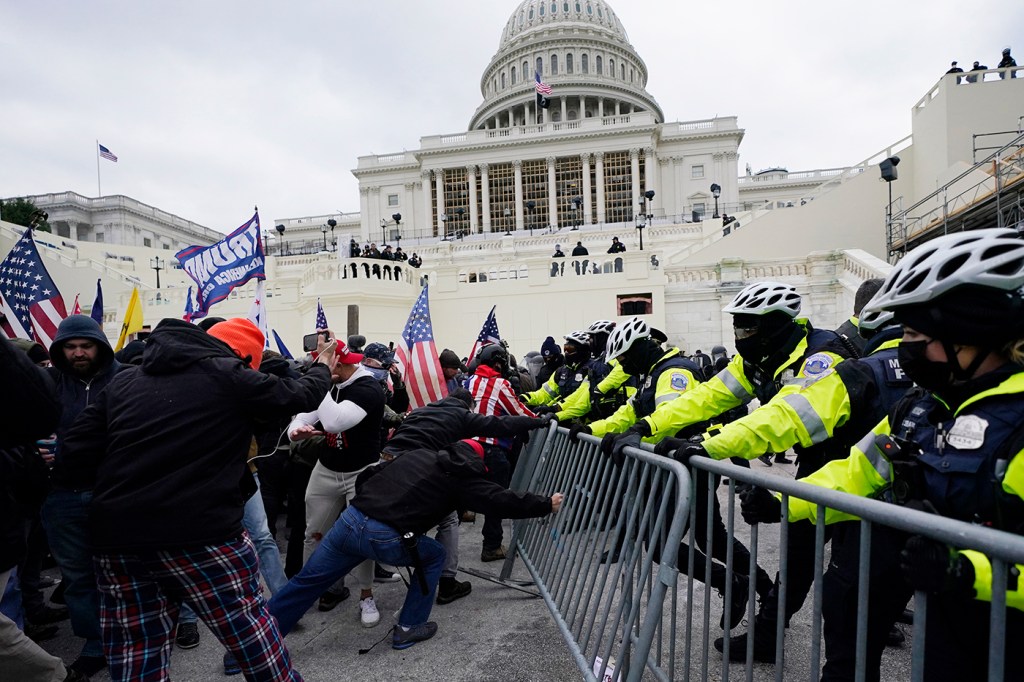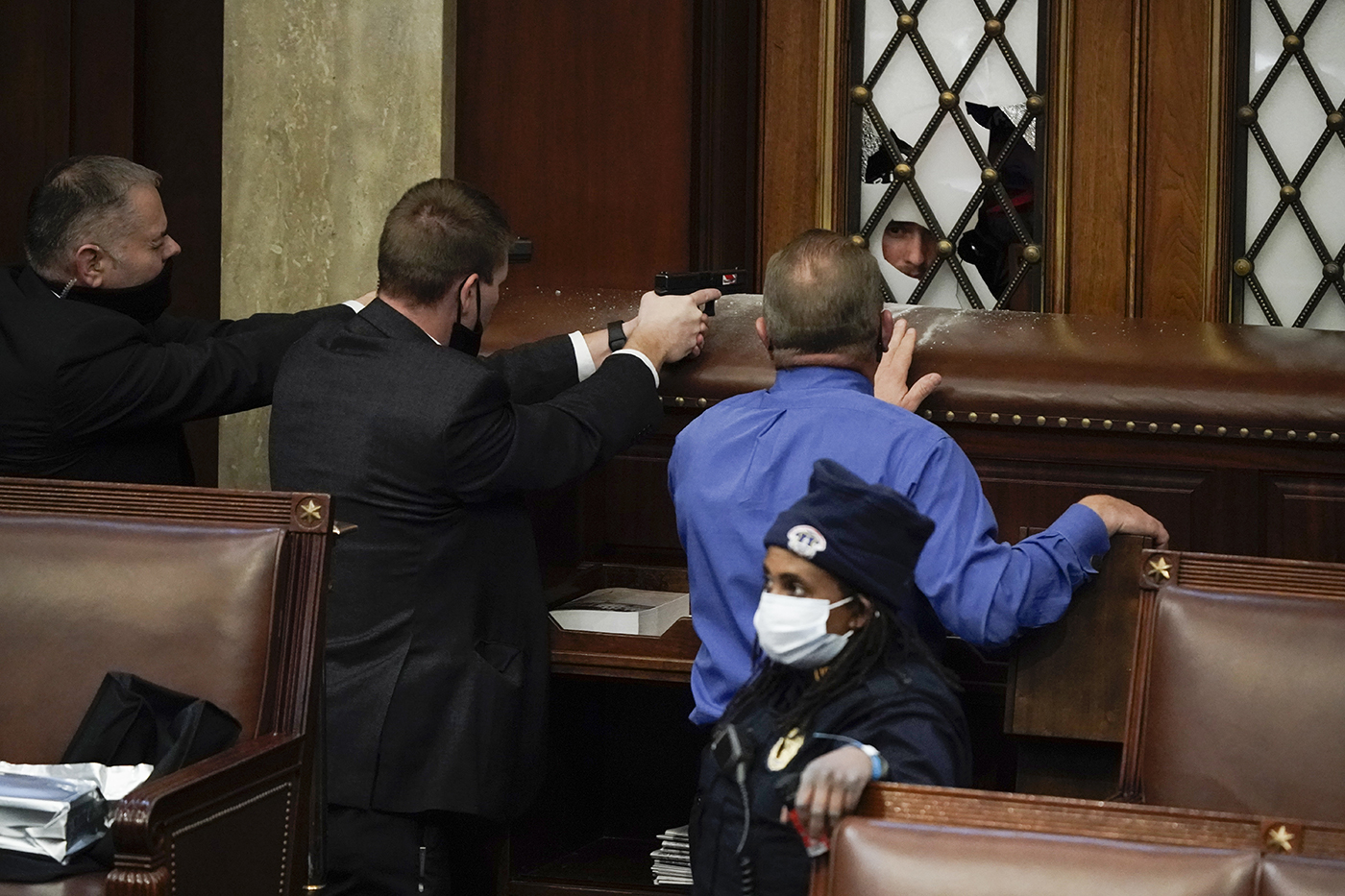After riots at US Capitol, attention turns to possible consequences for Trump

Hundreds of President Donald Trump’s supporters carrying “Trump 2020” flags and wearing “Make America Great Again” caps dramatically stormed the United States Capitol on Wednesday as lawmakers voted to certify President-elect Joe Biden’s victory. It was a scene that Northeastern professors described as an attempt to undermine the ideals of democracy.
Over the course of the night, as Congress certified the election results and some longtime Trump supporters withdrew their objections, many observers’ attention turned to the possible consequences for President Trump and his base.
A chaotic scene unfolded in the nation’s capital as people clashed with police officers outside on the steps of the White House, while others broke into the building, vandalized certain areas, and hung from the balcony overlooking the Senate floor where lawmakers deliberate and vote. Other images showed a man sitting at House Speaker Nancy Pelosi’s desk. Many more people took selfies and video footage with their phones.
“It is not uncommon for activities of this sort to start the end of democracies,” said Costas Panagopoulos, professor and chair of the political science department at Northeastern.
“This is the most un-American thing I’ve ever seen,” he added.
But Panagopoulous said the rioters, destructive as they were, did not necessarily

Left to right: Daniel Urman, Director of hybrid and online programs in the School of Law, and director of the Law and Public Policy minor, Costas Panagopoulos professor of political science and Nikos Passas, professor of criminology and criminal justice. Photos by Matthew Modoono/Northeastern University
signal a sweeping political movement. “These rioters do not necessarily represent majorities of Americans or even Republicans,” Panagopoulos said, “but rather a small fraction of the most dedicated Trump base.”
Minutes before the rioters entered the building, Senate Majority Leader Mitch McConnell, a Republican who had supported Trump in the past, urged his fellow Senators to certify the election results. “The voters, the courts, and the states have all spoken,” he said on the Senate floor. “If this election were overturned by mere allegations from the losing side, our democracy would enter a death spiral. We’d never see the whole nation accept an election again.”
Daniel Urman, professor of law and public policy at Northeastern, said these remarks were noteworthy from McConnell, considered one of the most partisan figures in Washington: “He was decrying having separate facts on both sides the whole time.”
What began as a previously scheduled demonstration against the certification of Biden’s win reached a boiling point by noon when Trump—speaking to a crowd assembled near the White House—continued to assert that the election was rigged. Trump urged the crowd to walk to the Capitol, saying, “you will never take back our country with weakness.”
The Electoral College had already awarded Biden more than enough votes to become the 46th president on Jan. 20, and lawmakers were scheduled to formally certify the win. The joint meeting of the House of Representatives and the Senate immediately ended when protesters entered, multiple news reports say.
Lawmakers were seen cowering behind desks while others were quickly escorted to safety in another part of the building, news organizations reported. One woman who was shot by U.S. Capitol Police during the riot has been pronounced dead.
“Public order, trust in institutions, trust in the political process, protection of democracy, national security, all of those things are by definition the kinds of things that both the president and members of the Congress have given an oath to protect and promote,” said Nikos Passas, professor of criminology and criminal justice and co-director of the Institute for Security and Public Policy.
“What they did here is undermining the purpose that they were elected to serve,” he said. “That to me is institutional corruption.”

“Trump is treating the U.S. government the way a renter treats an apartment after the security deposit has been forfeited,” said Urman.
Whether the president’s calls-to-action were responsible for the violent events will be debated in the coming days. Trump had encouraged a demonstration against the vote certification for weeks, tweeting on Dec. 20: “Big protest in DC on January 6th. Be there, will be wild!”
As rioters continued to swarm the Capitol grounds in the afternoon, Trump recorded two tweets and a short video statement urging supporters not to be violent, but repeating unfounded and debunked claims that the election results were fraudulent.
One far-fetched but not impossible repercussion for Trump could be impeachment in the final days of his presidency, Urman said.
“One thing no one talks about is how impeachment and removal can bar you from future office,” Urman said.
In other words, senators could decide President Trump is no longer fit for office, nor will he be in the future.
Urman agreed with Panagopoulos that Wednesday’s pandemonium was un-American.
“This is un-American because they’re disrupting something peaceful, which was the outcome of the election. This would be different if they were trying to overthrow a tyrannical government,” Urman said. What would have been American, Urman said, is if Trump had accepted defeat graciously.
The violence “is the consequence of the refusal of the president to accept the results of the election,” Urman added.
For media inquiries, please contact media@northeastern.edu.





